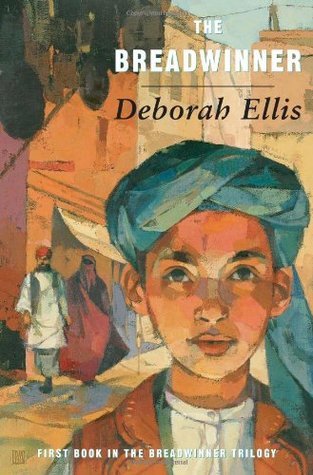Glossary
byGlossary: The glossary included in Breadwinner plays a crucial role in helping readers understand the cultural, historical, and linguistic aspects that shape the world of the story. Each term is explained concisely, providing valuable insights into the context in which the narrative unfolds. One important term is “burqa,” which is a full-body garment worn by many women in Afghanistan to maintain modesty, covering them entirely except for a mesh screen for the eyes. This piece of clothing symbolizes the social expectations placed on women, contributing to the understanding of the struggles that characters face in the story. Another key term, “chador,” refers to a cloth worn by Afghan women to cover their hair and shoulders, further underscoring the emphasis on modesty in Afghan culture.
In addition to clothing, the glossary also includes linguistic and cultural terms. “Dari” and “Pashtu,” for example, are two of Afghanistan’s major languages, spoken by different ethnic groups across the country. Understanding these languages allows readers to better appreciate the cultural diversity and social dynamics present in the story. Another term featured in the glossary is “Eid,” which is a significant Muslim holiday marking the end of Ramadan, a month of fasting. This celebration holds great importance in the lives of the characters, and the glossary helps contextualize the meaning and traditions surrounding it. By explaining these cultural aspects, readers are provided with a deeper understanding of the characters’ way of life and the significance of their practices.
The glossary also highlights everyday items that are integral to the lives of the characters, such as “karachi,” a hand-pushed cart commonly used in markets, and “kebab,” a popular food dish made by grilling skewers of meat. These items give readers a sense of the daily routine and food culture in Afghanistan, helping to make the setting more relatable and immersive. In terms of safety, the glossary includes the term “land mine,” which refers to hidden explosives that pose a danger to anyone who steps on them, providing context for the dangers that the characters face in their environment. The inclusion of such terms deepens the reader’s understanding of the challenges faced by the people living in the region and adds a layer of realism to the narrative.
The glossary also offers insights into local attire, such as “nan,” the traditional Afghan bread, and “pattu,” a woolen shawl worn by men and boys. These items of clothing and food are important elements of Afghan culture, contributing to the authenticity of the setting. The term “shalwar kameez” is explained as a loose-fitting outfit worn by both men and women, with women’s versions often adorned with intricate embroidery, reflecting the gender distinctions in clothing styles. These definitions help readers visualize the environment and the characters, enhancing the emotional connection with the story.
Additionally, the glossary provides historical context, offering explanations for terms like “Soviets” and “Taliban.” “Soviets” refers to the former Soviet Union, which had a major influence on Afghanistan during the late 20th century, while “Taliban” refers to the militant group that took control of Afghanistan in the 1990s, providing a backdrop for the story’s setting. By including these historical references, the glossary helps readers understand the political environment that affects the characters and their lives. The final term, “toshak,” refers to a narrow mattress used in Afghan homes, providing insight into the modest living conditions of many families in the region.
Overall, the glossary in Breadwinner serves as an invaluable resource for readers, offering essential definitions that enrich the narrative and foster a deeper understanding of Afghan culture and history. By including terms related to clothing, language, food, and safety, the glossary adds depth to the reader’s experience, ensuring they can fully engage with the story’s setting. It also helps to contextualize the historical and political backdrop, allowing readers to grasp the complexities of the challenges faced by the characters. Through this glossary, the readers gain a more comprehensive understanding of the world within the book, enabling them to better appreciate the story’s themes and the cultural nuances that shape it.

